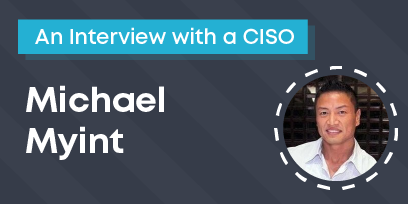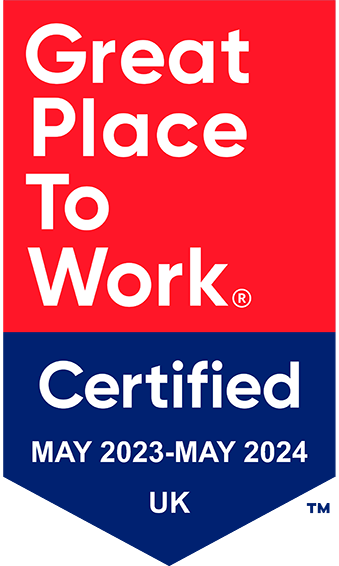The integration of Artificial Intelligence (AI) is transforming the way we work. From streamlining operations to enhancing decision-making, the impact of AI in the workplace is apparent. Let’s explore how artificial intelligence is reshaping the modern workforce, providing both challenges and opportunities.
The Advantages of AI in the Workplace
Artificial intelligence holds the potential to revolutionise industries across the board. With advanced algorithms and machine learning capabilities, AI can process enormous amounts of data at speeds beyond human capacity. This empowers businesses to extract valuable insights, optimise processes, and make more informed decisions.
In the healthcare industry, AI-powered systems such as Siemens’ AI-Rad Companion platform are used to analyse medical records and imaging data to aid in diagnosis. Similarly, in the financial sector, AI algorithms are used for fraud detection, processing massive datasets to identify suspicious transactions in real-time.
In cybersecurity, AI has been used to enhance threat detection and response. AI-powered security platforms like IBM’s ‘Watson’ utilise machine learning algorithms to analyse huge volumes of data in real-time.
1. Increased Efficiency and Productivity
One of the most obvious effects of artificial intelligence in the workforce is the increase in efficiency and productivity. AI-driven automation streamlines repetitive tasks, allowing us to focus on higher-level, strategic initiatives. This not only speeds up workflow but also enhances overall output, driving significant gains for businesses. For example, US SaaS company Zendesk uses AI-powered chatbots to handle routine inquiries in its customer service function; while British cyber security company Darktrace uses AI algorithms to monitor network traffic and identify anomalies that could indicate a potential cyber threat.
2. Increasing Accuracy and Correcting Biases
AI systems are also really good at consistently delivering accurate results. They don’t make the same mistakes that humans can, which means they are super accurate whether their tasks involve data analysis or customer service interactions. And if they are properly set up and monitored, AI can help avoid any human biases that may sneak into decision-making processes.
In our industry, software company Cylance (acquired by Blackberry) developed AI-driven antivirus software that uses machine learning algorithms to identify and block malware.
3. Improved Decision-Making and Predictive Analytics
By leveraging AI-powered analytics, businesses can make more informed decisions based on data-driven insights. Predictive analytics models, for instance, can help forecast trends and customer behaviours, enabling companies to proactively adjust strategies. Being ahead of the game like this can seriously boost a company’s profits.
One company that uses predictive analytics well is Splunk. Splunk’s platform combines machine learning and predictive analytics to detect and respond to cyber threats in real-time. Their User and Entity Behavior Analytics (UEBA) solution uses advanced analytics to help companies proactively identify and mitigate potential security incidents before they escalate.
4. Artificial Intelligence in the Workforce: Empowering Analysts
With AI taking care of the boring stuff and helping to automate tasks, security pros get to tackle the exciting and important stuff. Analysts can dig deep into analysing threats, developing strategies, and implementing policies. AI is their secret weapon, helping them protect digital assets even better.
5. Enhanced Threat Detection and Response
AI-powered systems excel in sifting through huge datasets at lightning speed, spotting anomalies and possible threats in real-time. Through machine learning algorithms, these systems continuously adapt and refine their threat detection capabilities. This means that as cyber threats change their game, AI evolves right along with them, making sure we’re one step ahead in keeping things safe.
As mentioned previously, Darktrace’s AI algorithms are used to identify potential cyber threats and offer a proactive defence against them. This speed in real-time simply wouldn’t be possible by using human resources alone.
6. Predictive Analytics and Proactive Defense
One of the most significant advantages of AI in cybersecurity is its capacity for predictive analytics. It looks at past data and figures out what cyber trouble might be coming our way. This means our security teams can jump into action early, strengthening our defences and stopping problems before they even get started.
IBM’s Watson platform can detect unusual patterns of traffic within a network and raise an alert, and continuously learns to improve its detection capabilities over time to identify emerging threats.
Disadvantages of AI in the Workplace
1. Balancing AI Advancements with Workforce Considerations
While AI has some awesome potential to shake things up at work, we need to talk about the downsides too. One significant concern is that some jobs might get replaced by machines. When AI takes over routine tasks, some people might not have a place in the job market anymore. Plus, if we rely too much on AI, it could make us a bit rusty when it comes to thinking on our own and solving problems.
2. Over-reliance on AI for Threat Detection
While AI is awesome at spotting the usual suspects and anomalies, it might not always catch the brand new or really sneaky cyber threats. Depending too much on AI for spotting threats could give us a false sense of safety. After all, human oversight and expertise is still important for finding and stopping those new and evolving threats.
3. Potential for Biases in AI Algorithms
AI systems learn from historical data, which may contain biases. This could lead to a skewed understanding of what constitutes a threat or an attack. If the training data is not diverse or representative, the AI may discriminate against certain types of cyber threats or incorrectly identify normal activity as malicious.
The Ethical Implications of AI in the Workplace
With AI taking a bigger role at work, we’ve got some big things to think about – ethical considerations come to the forefront. Issues like keeping our data safe, transparency about how AI works, and making sure people don’t lose their jobs because of it. Finding the right balance between using advanced tech and making sure everyone is treated ethically is key for using AI in a smart and responsible way.
Embracing Artificial Intelligence at Work
In an era defined by technological advancement, the integration of AI in the workplace is both a necessity and an opportunity. Embracing artificial intelligence empowers businesses to optimise operations, make more informed decisions, and create safer, more efficient work environments. However, it’s important to retain the human connection and utilise AI as an extension of the existing workforce.
To ensure the seamless integration of AI and safeguard against potential cyber threats, consider partnering with a trusted cybersecurity expert like Intaso.
Explore how we can strengthen and support your business against evolving cyber threats. Contact us today to elevate your cybersecurity strategy and safeguard your workplace.








